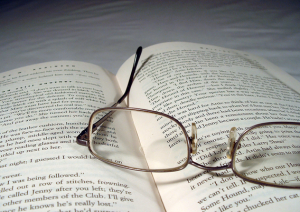
When I proofread for authors, sometimes, not often, (most of my authors are lovely) a client will come back to me declaring my gross ineptitude.
I ask what the issue is, and the answer always goes something like this, “After you edited my book I found x number of errors you didn’t catch!”
This accusatory tone, and the certain list of errors “I missed” lasts a few emails before I give a perfunctory nod of sorts, and try to explain proofreading statistics, the human condition, and what the editing world considers excellence in proofreading. But I never give a refund. Why? Because I am an excellent proofreader.
What is “Excellence?”
Editing excellence is considered to be between 80% (EAC) and 95% (Most other sources listed here at Copywriting.com). Professor Panko at the University of Hawaii says 91%. Bear in mind then, there is probably another level of “OK” editor working at around 70-80%. In my experience, there are plenty of people willing to “edit” for a little money who come out at around the 70% mark – editors like me usually end up being sent their handiwork to buff up once the cheapskate author realizes they just experienced a false economy.
The Human Condition
It is not humanly possible to catch every single typo, misspelled word, and incorrectly positioned comma in a book in one “sweep.” “Human” is the operative word here. According to Mike Sondalini at Lifetime Reliability Solutions, an error in reading a 5-letter word is around 0.003. Because we are human. If we read 100,000 5-letter words, the normal reader would make 30 mistakes. But in a manuscript, we are reading all sorts of length of word, with formatting and spacing errors.
Let’s slap that up to a scenario where I don’t catch 2% as in the general “excellence” guidelines given above. If I edit a 400-page book, that’s 400 x 250 words on a page. That means out of 100,000 words, if I missed 2000 errors I’d be considered an above-excellent proofreader.
But I don’t act like a normal reader because I’m a professional. I don’t miss 2000 errors.
Editors Are Freaks
Yuka Igarashi, the managing editor of Granta magazine in the UK describes in The Guardian — oh, the irony (in-joke for editors, folks) — how my brain seems to work when he says, “anyone whose job it is to catch these mistakes – editors, copyeditors, subeditors, proofreaders – has to be an abnormal and malfunctioning human.
“This is one part of being an editor that no one much talks about. Sure, you have to know your way around commas and colons. You should have a feel for the nuances of syntax and the rhythm of sentences. You want to be sensitive to a writer’s intentions and a reader’s attentions. But you also need to be able to look at a page without using your brain. Put another way, you need to be able to look at words in a way that goes against everything your brain would naturally do when it looks at words.”
A Look At My Failures
Here are my “worst” stats (2014-2016) where stroppy authors “wanted their money back:”
- 11 errors not found (found by author afterwards) – 124,000 words – errors I found = 2768
- 21 errors not found (found by author afterwards) – 105,000 words – errors I found = 4751
- 7 errors not found (found by author afterwards) – 87,000 words – errors I found = 8564
That means I have been hitting more than around the 99.9% mark each time. I averaged $15 an hour on one of these manuscripts, and probably spent a further six hours taking it like a bee-eye-itch about the errors found. I think I’d get more at Walgreens with less aggravation (OK, OK, I love my job. I’m not working in Walgreens. I’m a bookish weirdo with smudged spectacles who lives for this stuff or I’d fade away and become the witch lady who lives on the hill with the cats and the creepy books. Such is the fate of an editor).
Yes, I use an autochecker. Several, actually. I also read the book from beginning to end, including the front matter and back pages. I check links, and I use pilcrows and shortcuts to find errors in a manuscript. I have tools. I don’t know why any author would just want me to use my eyes and nothing else! But it’s true: when proofreading, I don’t “read” to enjoy the story. I am not here to be a beta reader. I’m here to find the ghost in the machine, the gremlins that persist.
Gremlins
However, one of the most persistent gremlins in self-publishing lies elsewhere – in the mind of the inexperienced or egotistical author. The misunderstanding that editors must find 100% of all errors, or they aren’t good at their job. This is not only misunderstanding how to work with an editor, but also a misreading of exactly what state a manuscript should actually be in before it is proofread. You wouldn’t expect your maid to fix your car, or your mechanic to wash your dishes. There’s got to be an understanding of why you are hiring me, and when.
Adrienne Montgomerie at copywriting.com points out that the proofreader is not to blame; rather in traditional publishing the book should be in a fit state for publication and is checked by many specialist editors. “Publishers make sure that several sets of eyes vet a product: a developmental editor, a stylistic editor, a copyeditor, and a proofreader might all go over the words with a fine-toothed comb.”
Line editing, or copyediting, should be your first port of call to make sure everything has been placed correctly, and the manuscript is as good as it could be. You should then be trying to catch as many errors yourself as you can.
I should only be looking at the errors you don’t know you’ve made, in other words.
Of course, this is when 20/20 hindsight gets really fun for authors looking for a quick refund or a spiteful gloat. Once I have pointed out they have misspelled a word more than 3000 times over the course of the book, they are gleeful to point out the 3 instances I missed after I return their manuscript!
There is something about learning by reading that means if our brain sees a word corrected between 5 and 30 times, we relearn it, and a flag will go up to look out for it. This is partly down to a process called the recency effect, your brain’s system that gives importance to the most recent knowledge given. Your brain holds on to that most recent flag you made, and it’s what authors do after they read their manuscripts with corrections. The thing is, that should be a useful thing, but authors often feel cheated because I didn’t find it for them. That’s not how it works, guys!
Rich Adin, editor, pulls out some of my most familiar scenarios here on his blog, An American Editor. “I spent some time going through the author’s complaints. Two of the author’s complaints regarding mistakes in spelling that we missed were justified. We probably shouldn’t have missed them. On the other hand, there were more than a dozen errors surrounding those missed spellings that we did catch, including one that resulted in an AQ (author query) regarding the word immediately adjacent to one of the missed spelling errors.”
Rich Adin. I weep, brother.
Out of the 18-20 hours I will initially assign to a manuscript, I don’t want to be concentrating on fixing the things the author could have fixed because they are being lazy about typing. Some authors do this, and expect me to rack up 35 hours or more sorting out stuff they probably could have fixed if they’d just read it over even once before sending it. Frankly, that’s kinda rude. I do it because OK, I’m the cleaner, time to clean up, but I might not do it the next time.
Get an Editorial Review | Get Amazon Sales & Reviews | Get Edited | Get Beta Readers | Enter the SPR Book Awards | Other Marketing Services






















Leave A Comment